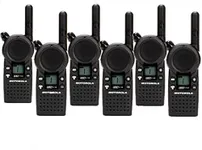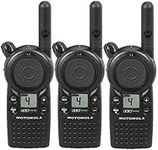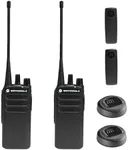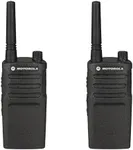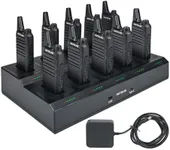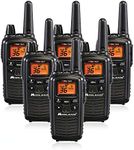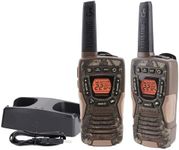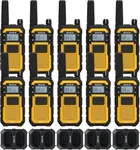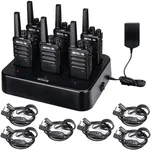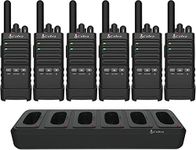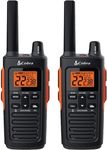Buying Guide for the Best Walkie Talkies
Choosing the right walkie-talkie can make your communication easy and effective, whether you're hiking, camping, working at an event, or just want an easy way to keep in touch without relying on mobile phones. The best approach is to understand how you plan to use the device and what environment you'll be in. Walkie-talkies come with a variety of features and specs that cater to different needs, so knowing what to look for will help you find a product that fits your situation perfectly.RangeRange tells you the maximum distance over which two walkie-talkies can communicate clearly. This spec is important because it determines how far apart you and your group can be while still being in touch. Ranges are typically divided into short (up to 2 miles), medium (2–5 miles), and long (over 5 miles), but remember that buildings, trees, hills, and even weather can reduce these distances in real life. Choose a range that matches your environment: for indoor or close-range outdoor use, short is fine; for outdoor adventures or large properties, aim for medium or long range.
Number of ChannelsThe number of channels a walkie-talkie offers decides how many separate conversations can happen at once, which matters for avoiding interference from other users. More channels mean more flexibility. Entry-level models may offer a handful of channels, while advanced ones have dozens. For casual or small group use, a few channels are enough, but in busy areas or for large groups, more channels will keep your conversations private and clear.
Battery LifeBattery life refers to how long your walkie-talkie will work before it needs a recharge or new batteries. This spec is crucial if you'll be away from power sources for long periods. Units may use standard replaceable batteries, rechargeable packs, or both. Short battery life (up to 8 hours) is fine for light, occasional use; medium (8–16 hours) covers most day trips or work shifts; long (16+ hours) is best for overnight excursions or continuous use. Select based on how long you'll need reliable communication.
Durability/Weather ResistanceThis tells you how well the device can handle drops, dust, and moisture. Some walkie-talkies are practically waterproof and extremely tough, while others offer only basic protection. If you’re using them outdoors or in tough conditions, look for water resistance and a rugged build. For mostly indoor or dry, safe environments, a standard build is usually sufficient.
Size and WeightThe size and weight indicate how easy it is to carry and use the walkie-talkie. Lighter, compact units are easier for kids or if you need to keep your hands free, while larger units may have longer battery life and more features. Decide what balance between portability and functionality suits your situation best.
Privacy Codes / Sub-ChannelsPrivacy codes, also known as sub-channels, help minimize interference and allow more private conversations on the same main channel. If you’ll be using your walkie-talkies in crowded areas with many other users, more privacy codes provide better security from eavesdropping. For simple, isolated use, this is less important.
VOX (Voice Activated Transmission)VOX lets you use the walkie-talkie hands-free, as it detects your voice and starts transmitting automatically. This feature is handy if your hands will be occupied (like when biking, hiking, or working). If you see yourself needing hands-free operation, look for units with this option.
Additional FeaturesSome walkie-talkies offer extras like built-in flashlights, emergency alerts, earpiece jacks, or weather channels. These can add convenience or safety in certain situations. Consider which features would genuinely help you in your intended use, rather than just picking the model with the most features.
